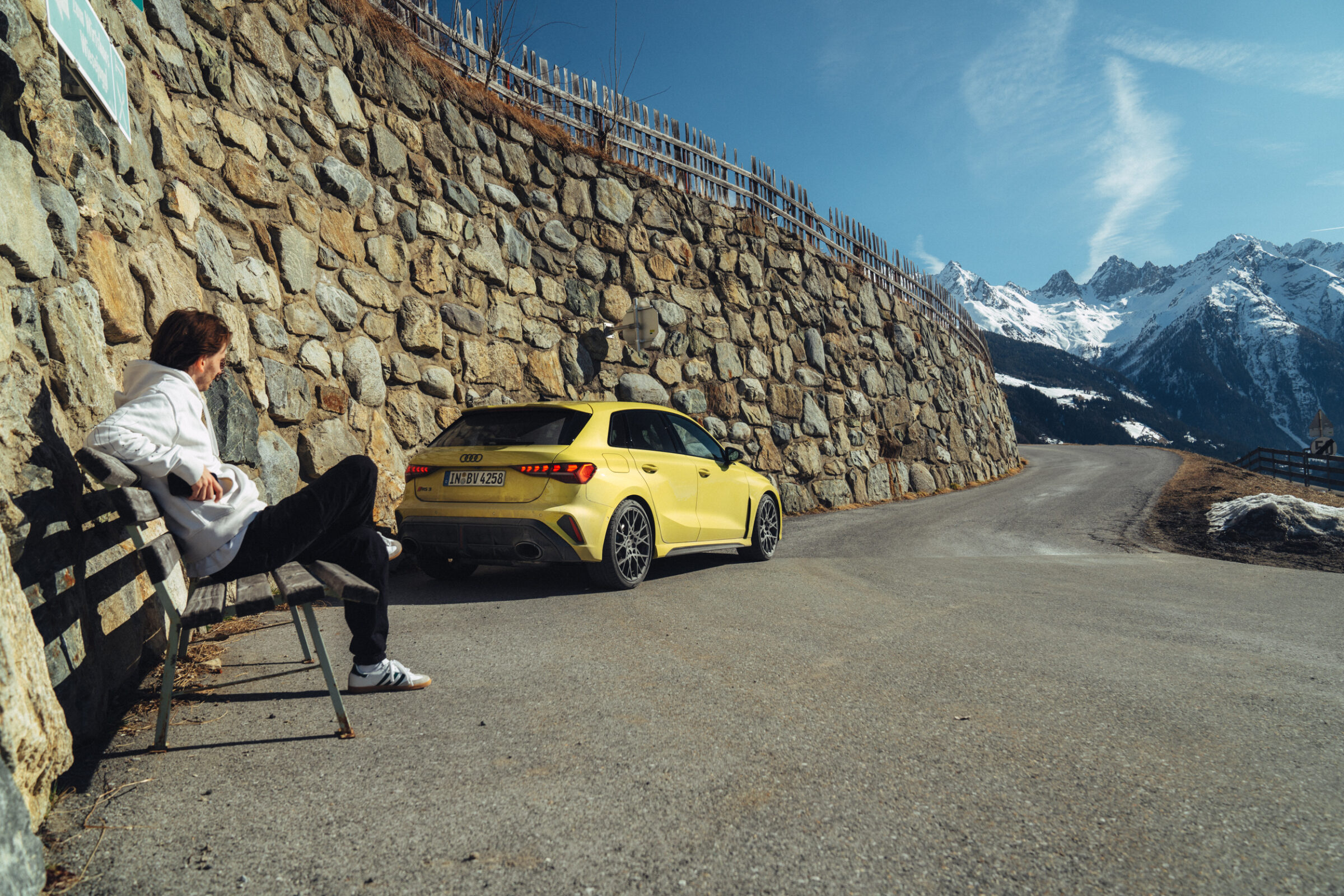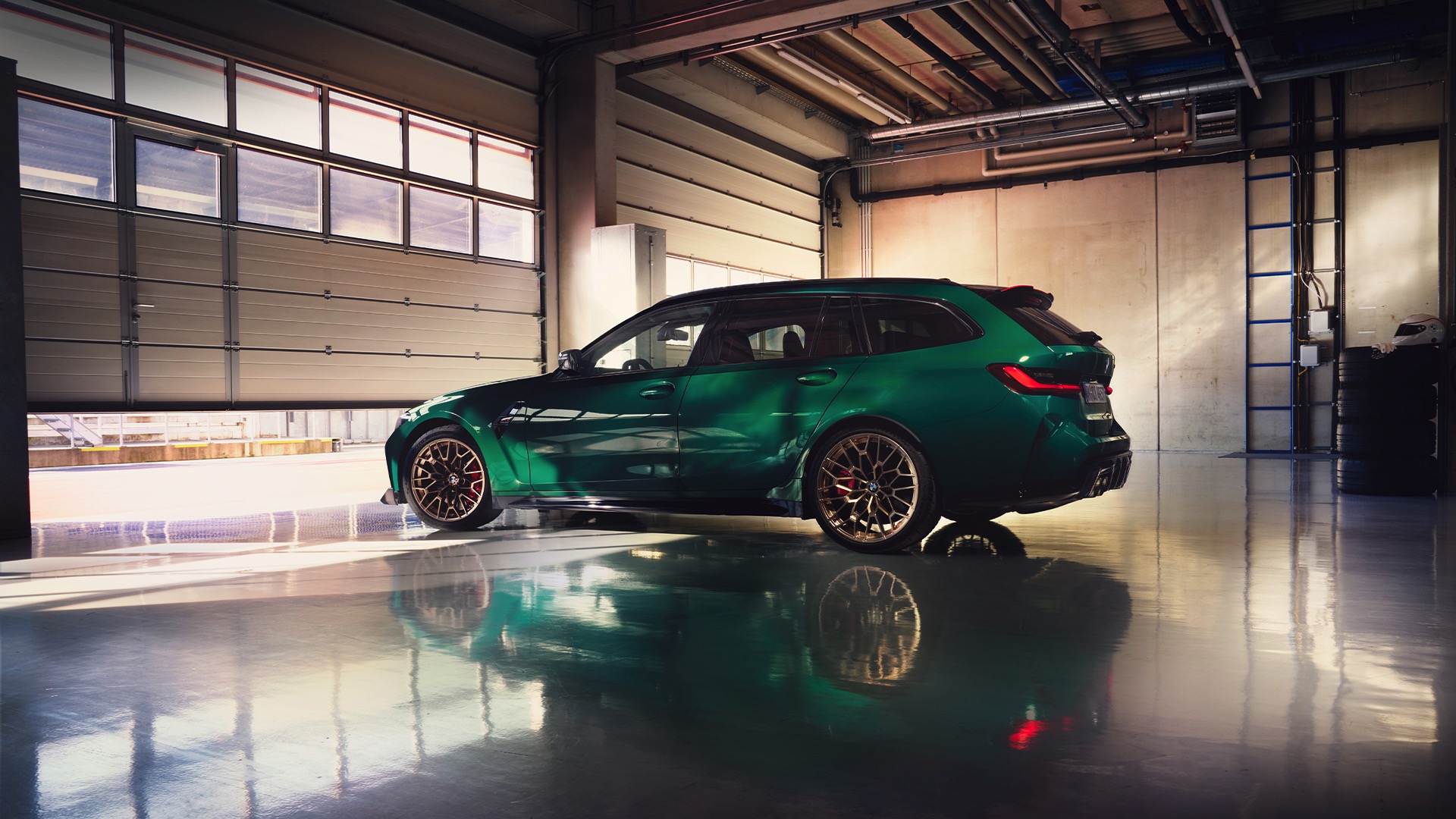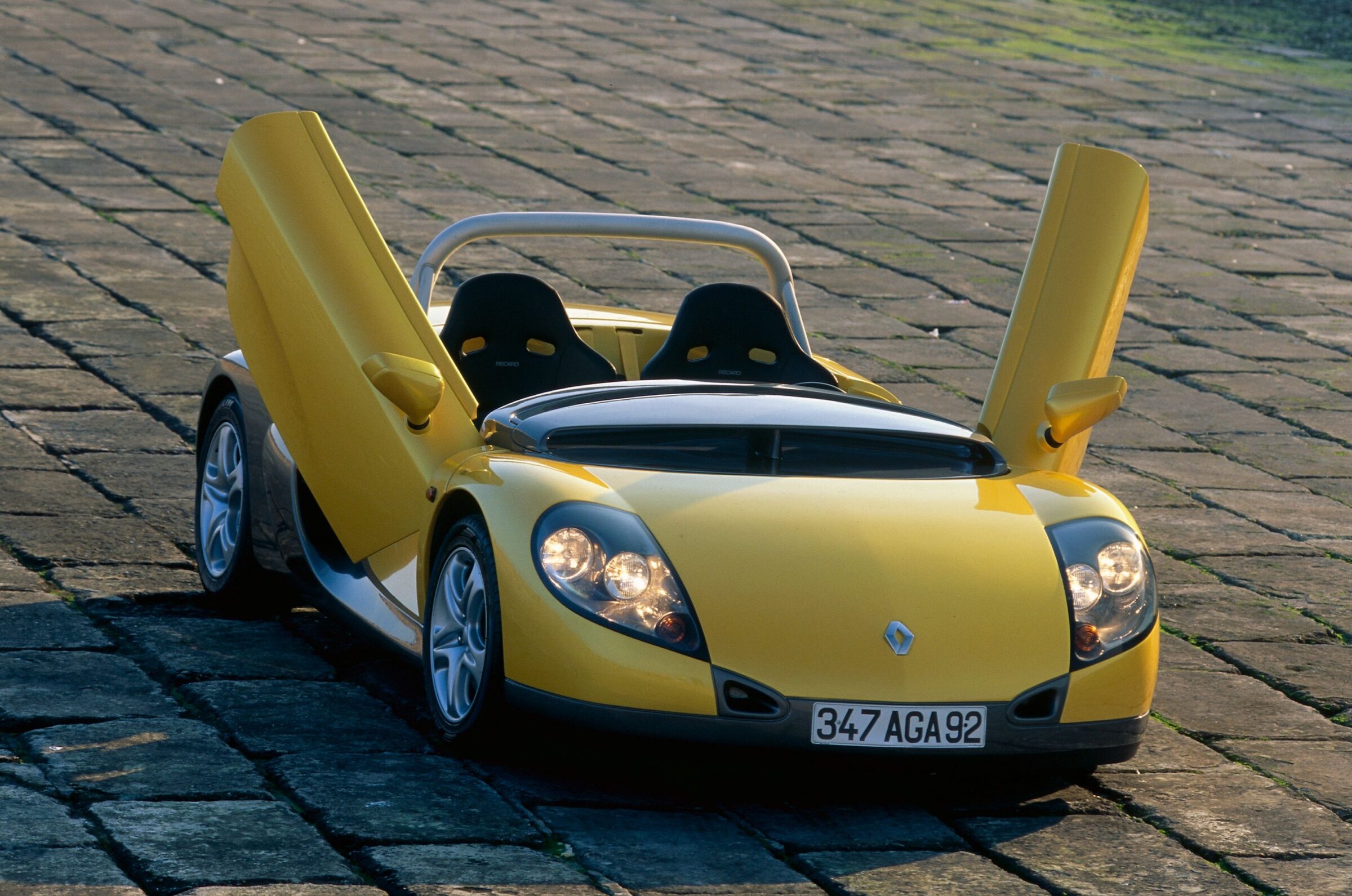Koenigsegg Jesko
Imagine for a moment, that you are 80 years old and the father of a successful car maker. In addition, you are a welcome guest at all car shows where your son exhibits his cars. And now a new model is to be presented, the successor of a sports car with worldwide popularity, which holds the record of the fastest street-legal production car to date. Would you be interested in how exactly this car looks like, what performance data it has and, above all, what its supposed to be named? Probably yes. Accordingly, you would be interested to read through the previously handed out press release and, with a model name like ‘Dominera’, affectionaly argue that this wouldn’t have been ideally chosen for the international market. However, what you don’t know at this point: The press release you read was printed exclusively for your eyes and isn’t completely true. Although the technical data and the illustrations are correct, the planned model name is not.
Exactly this story took place in the run-up to the Geneva International Motor Show in Ängelholm/Sweden. Company boss Christian von Koenigsegg and his team did their best to keep his father Jesko von Koenigsegg in the dark about the new model. They actually succeeded and so the now 80-year-old former jockey and entrepreneur only learned at the official press conference in Geneva by Christian’s wife Halldora of the fact that the new supercar will receive the name Jesko. It was followed by emotional scenes, in which some tears were shown opressed or open. Even a few hours later, when we sat together with Jesko von Koenigsegg and a beer (brewed especially for Koenigsegg and also sold under the name Jesko in Sweden), he was still deeply surprised and enthusiastic about this gesture of his son. This resulted from the constant help Christian had received from him in the early days of his company 25 years ago. To this day he knows that he can always ask business questions to his father.










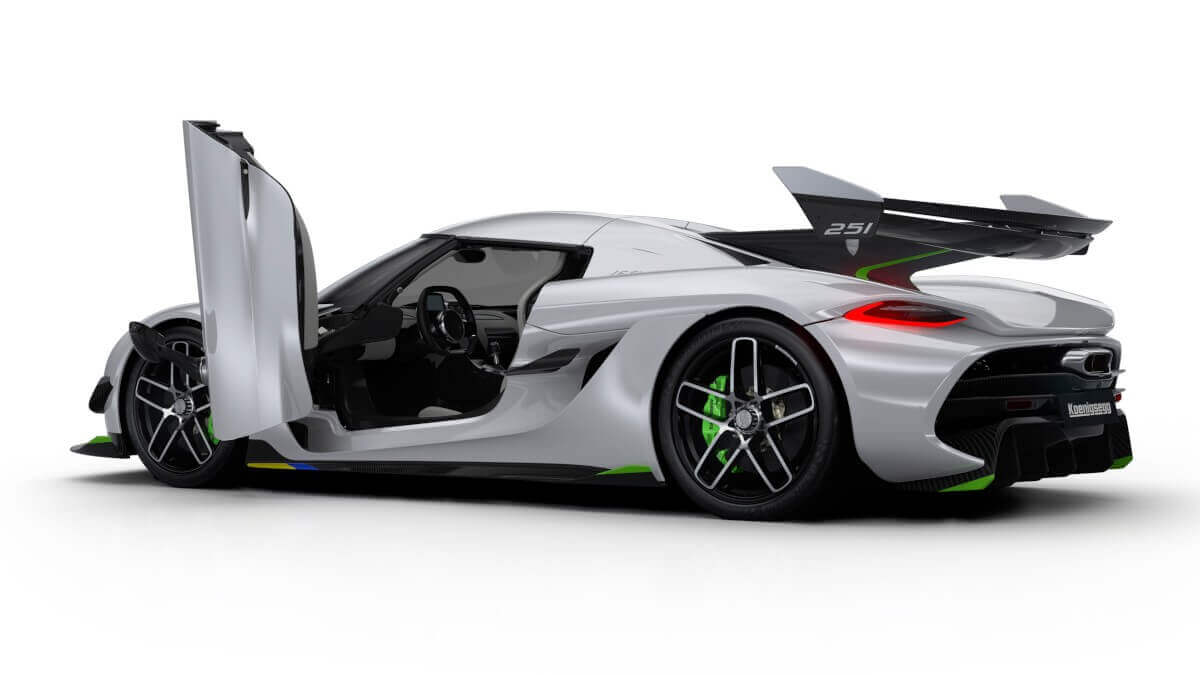

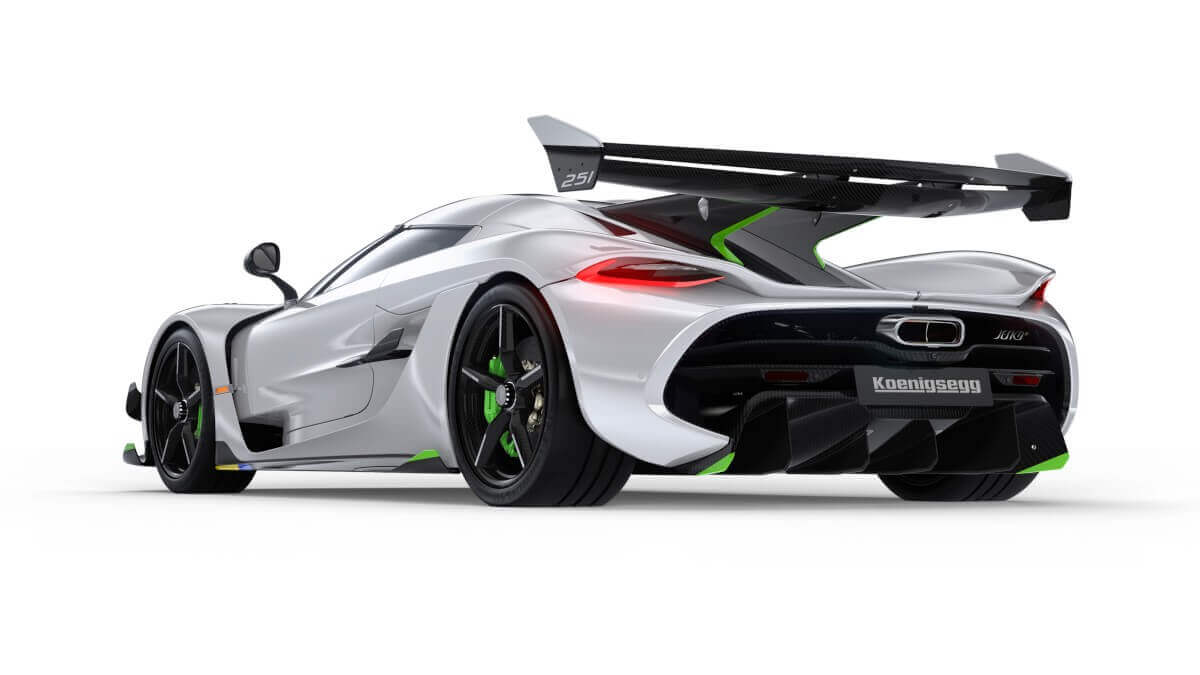

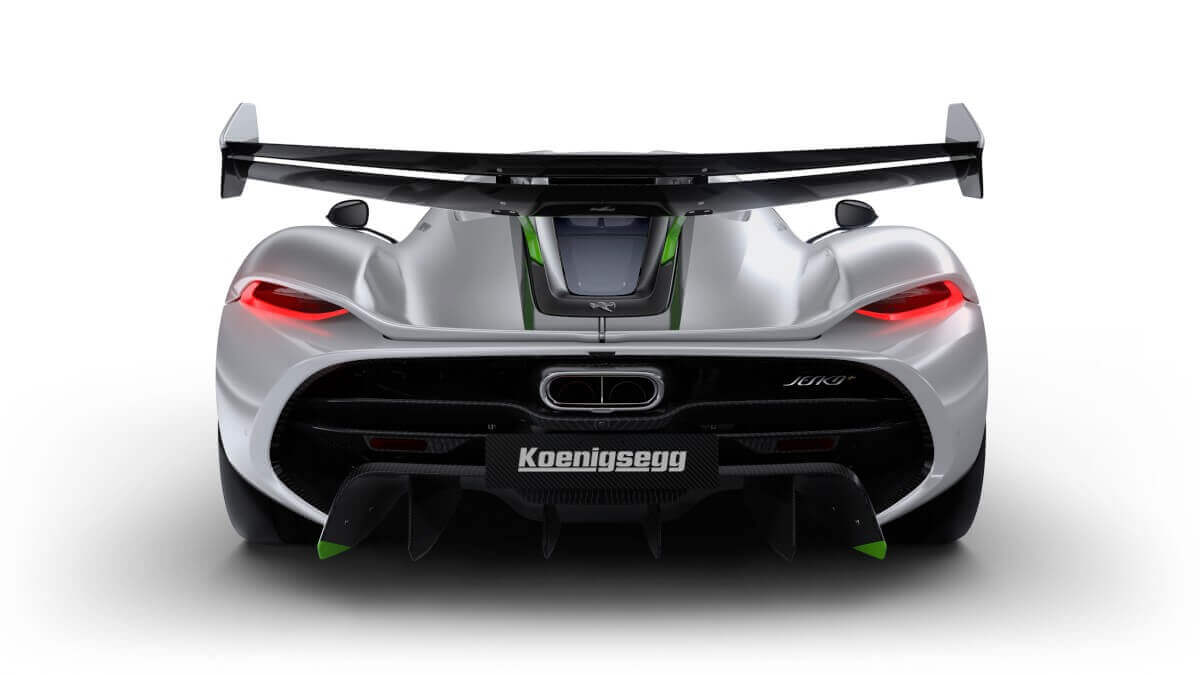







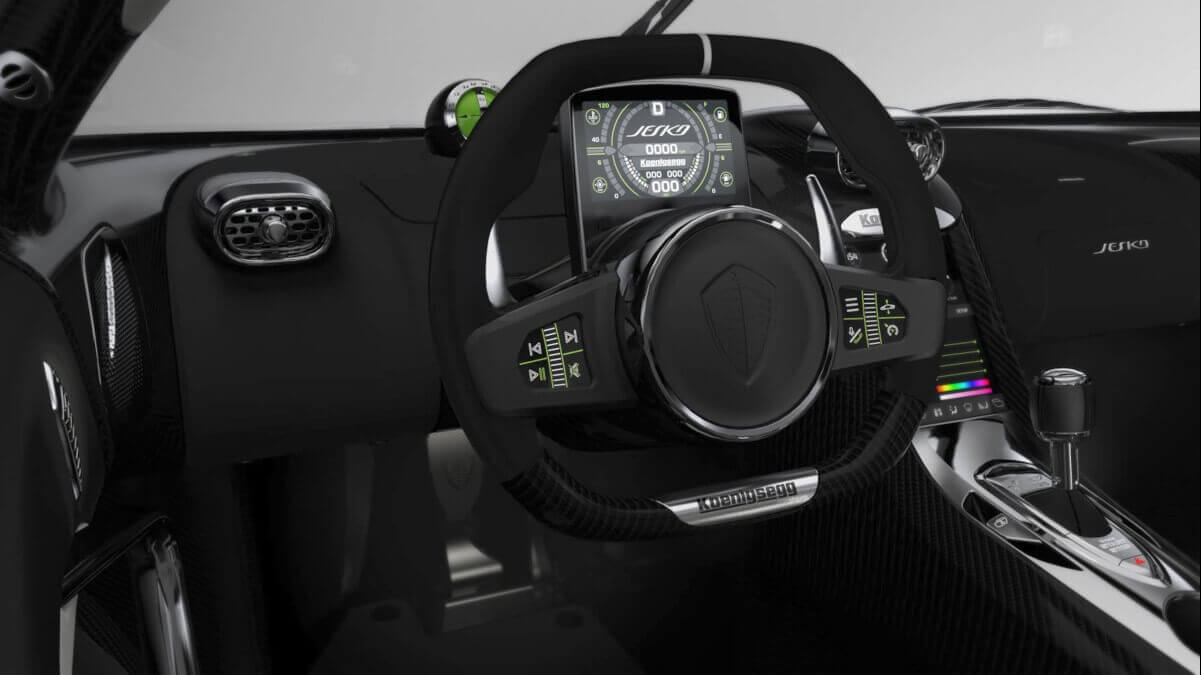

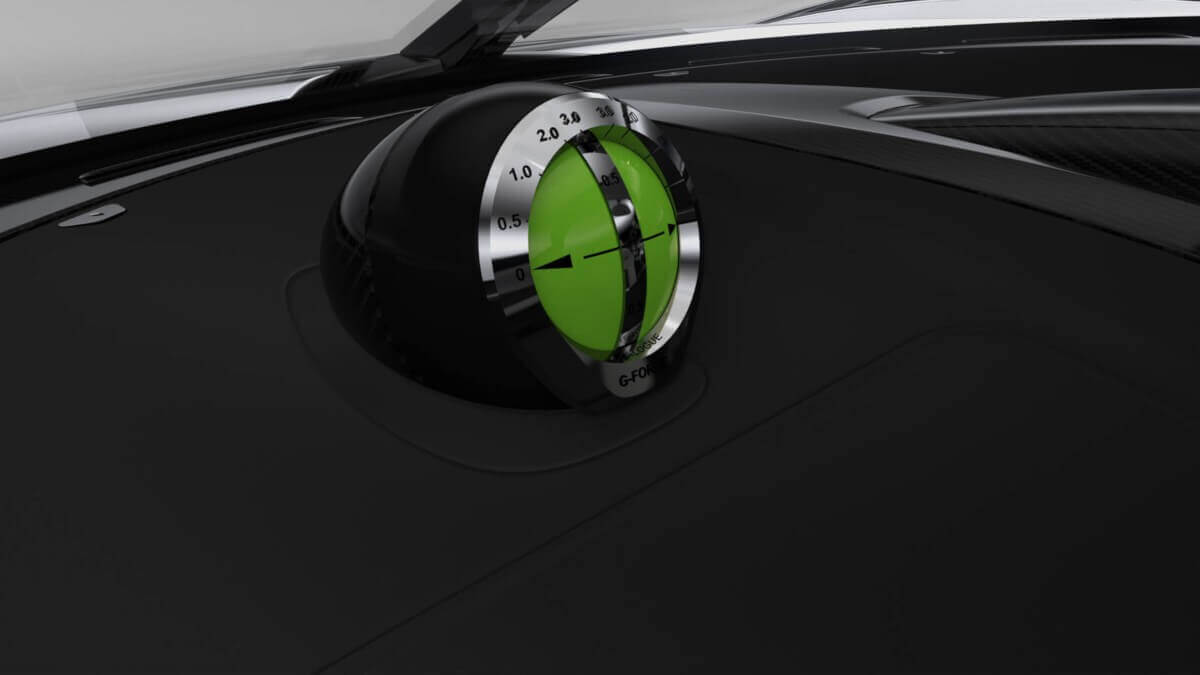

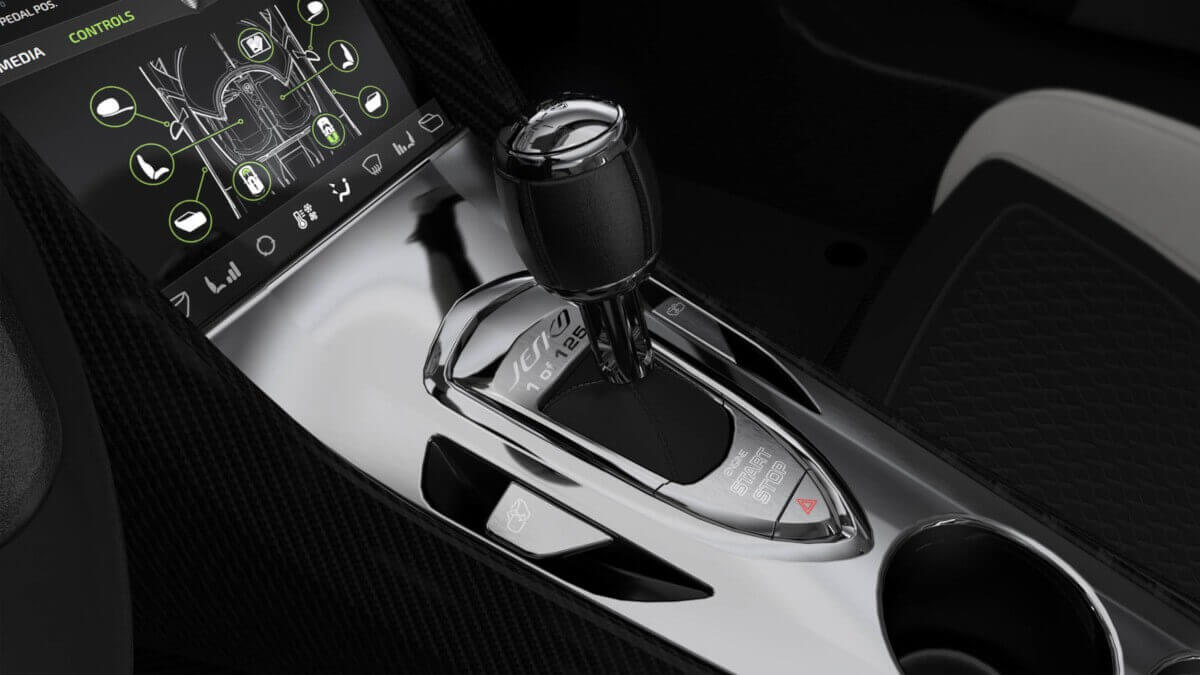

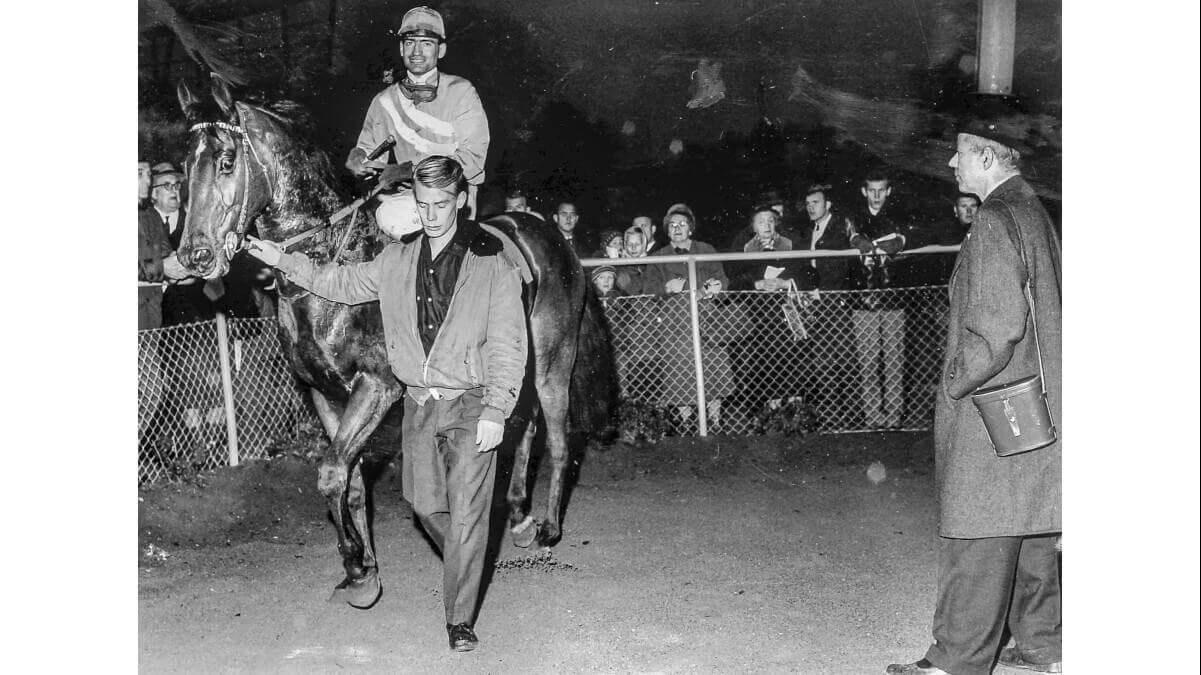

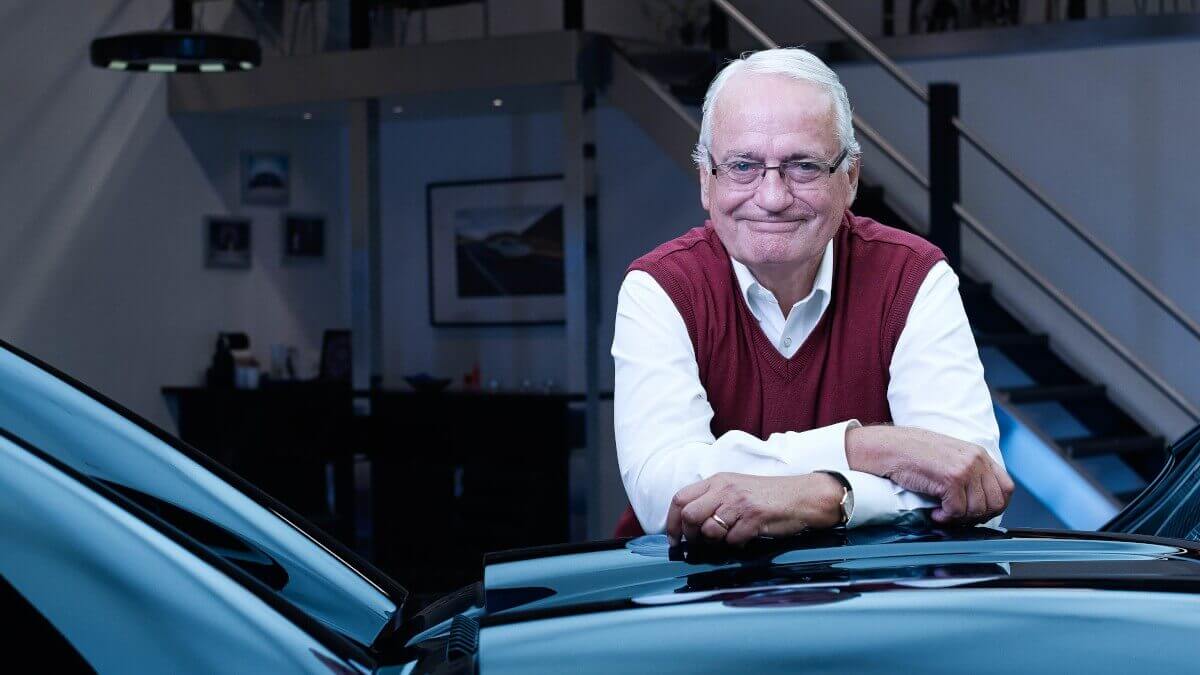

But not only the extraordinary story behind the naming is interesting. The new Koenigsegg Jesko is entering a difficult legacy. After all, the predecessor model Agera in its RS version stands in the Guinness Book of Records with a reached maximum speed of 277 mph reached in Nevada in November 2017 on average over two runs. Next to that, it also holds the records for 0-400-0 kph in 33.29 seconds, for the acceleration from standstill to 400 kph (248.5 mph) in 24 seconds flat, the fastest mile passed and the fastest kilometer passed. With the Jesko Koenigsegg would like to build on these successes and register the car in the lap record lists of various well-known racetracks. In addition, the variant Jesko 300 should actually be able to reach a maximum speed of 300 mph.
For this, the Jesko brings the best conditions. In contrast to rumors emerging in the run-up, it is not a hybrid vehicle, but according to Christian von Koenigsegg it might be the last Koenigsegg model with classic combustion engine only. Directly behind the two occupants sits the well-known V8 biturbo engine with five liters of displacement, but now compared to the Agera fitted with a 12.5 kilogram light 180-degree crankshaft, new cylinder heads, modified injectors (three per cylinder), ultra-light connecting rods, new pistons and various other improvements. With normal fuel (91 octane in the US, 95 octane in Europe) it delivers 1,280 hp. Optionally, as with the predecessors CCX and Agera, a variant that can run on E85 is available, that has 1,600 hp. The maximum torque is 1,500 newtonmeters, with at least 1,000 newtonmeters available between 2,700 and 6,170 rpm. In order to make the two large turbochargers respond faster at low speeds, Koenigsegg installed an air blowing system with a 20-liter compressed-air tank and 20-bar airflow in the low-speed range. At the same time, this system also ensures that the catalystic converters in the exhaust system reach their operating temperature faster.
For power transmission to the rear wheels Koenigsegg developed the new ‘Light Speed Transmission’ (LST), a nine-speed gearbox with seven wet-mounted clutches on three axles. It dispenses with synchronizer rings and at the same time allows gear changes between all available gears at incredible speeds. This is due to the fact that the previously engaged gear is disengaged and at the same time the newly selected gear is engaged. This entire new gearbox, including the integrated starter motor, fluids and oil pump, will only weigh 90 kilograms. By comparison, a modern seven-speed dual-clutch transmission, as it is used for example in the Bugatti Chiron, weighs about 140 kilograms. The gear changes take place either via shift paddles behind the steering wheel or through a lever on the center tunnel.
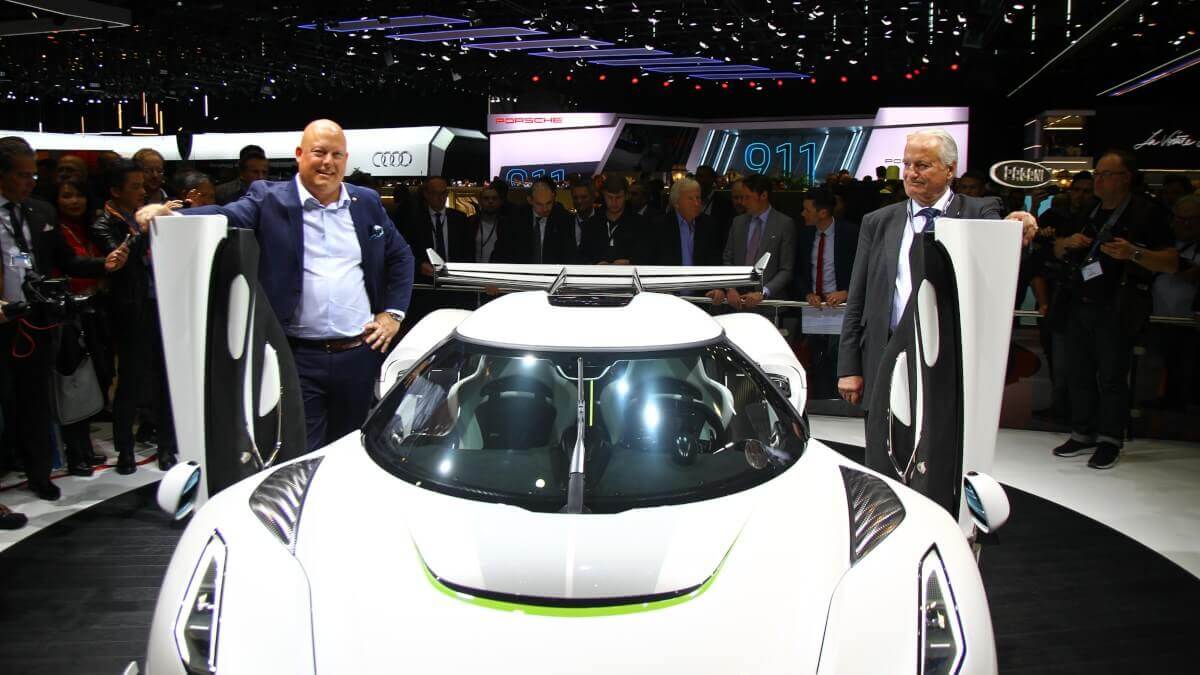



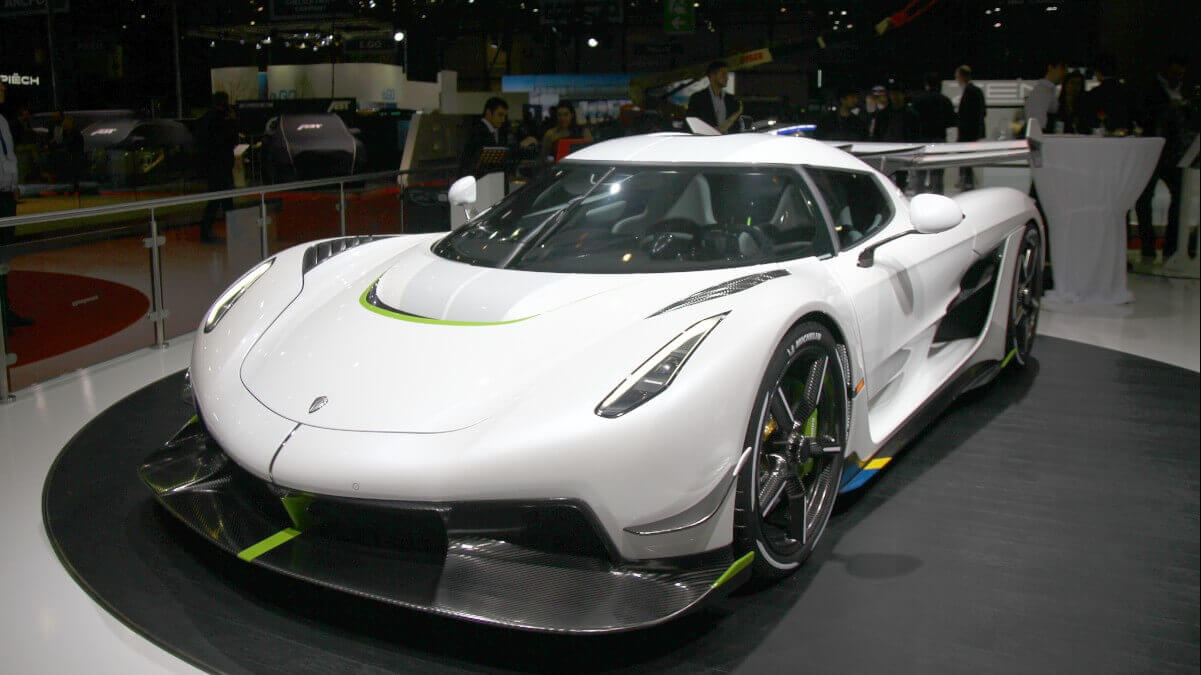



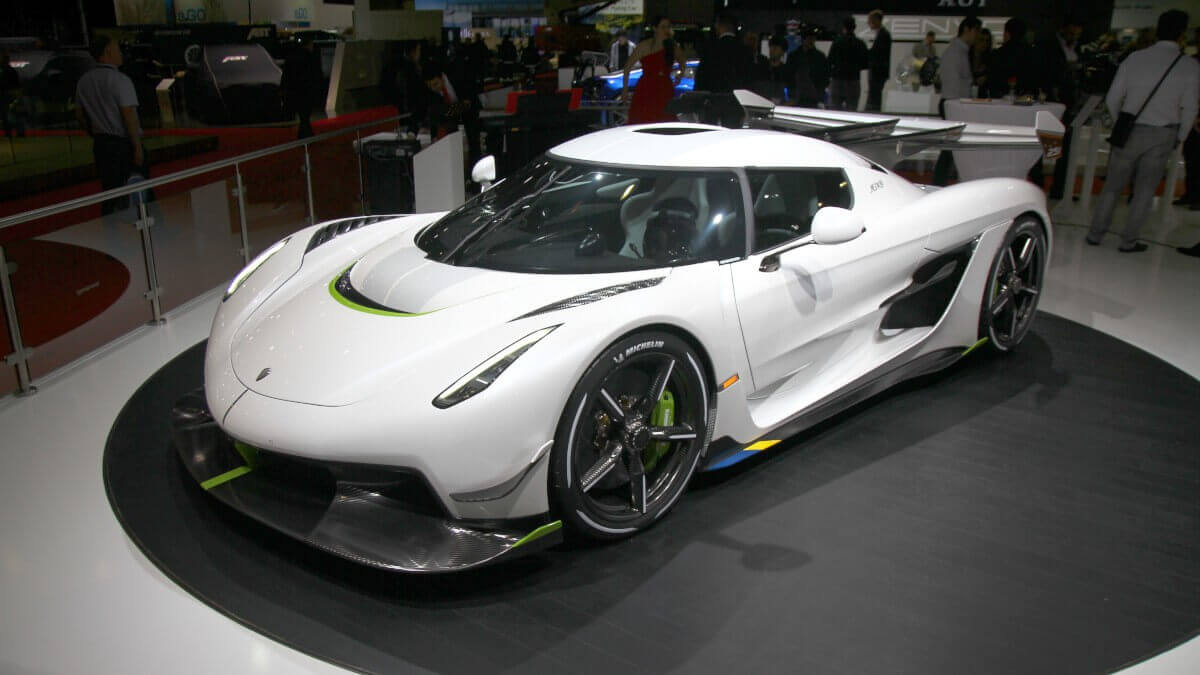

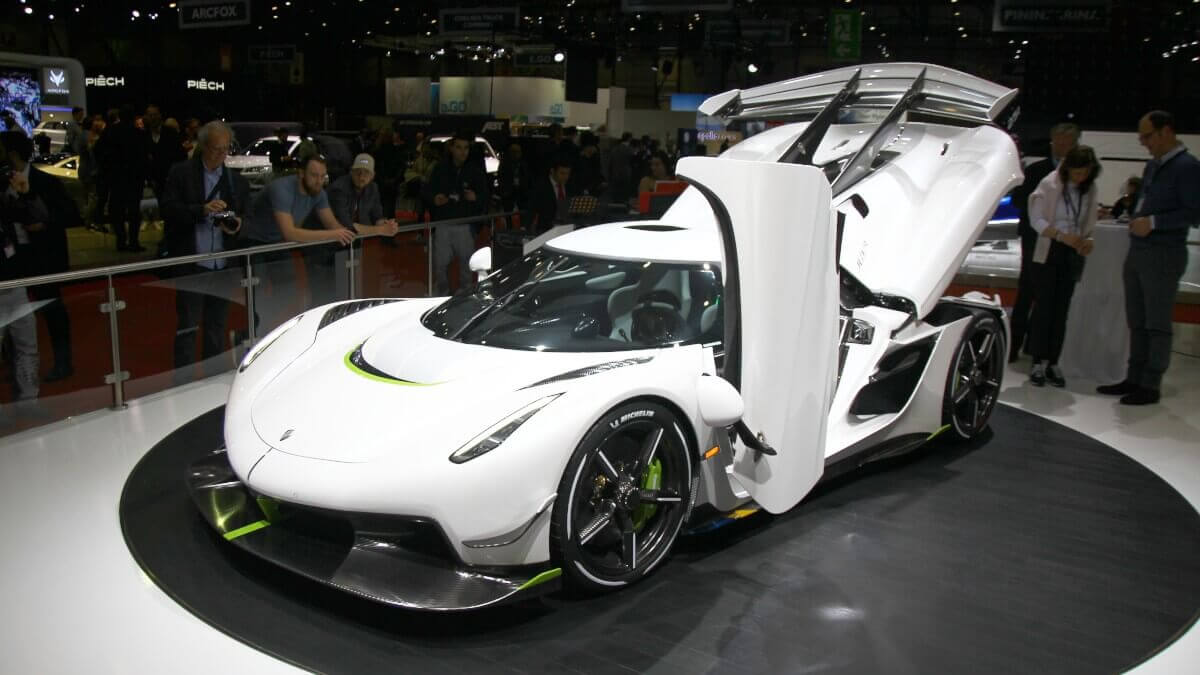

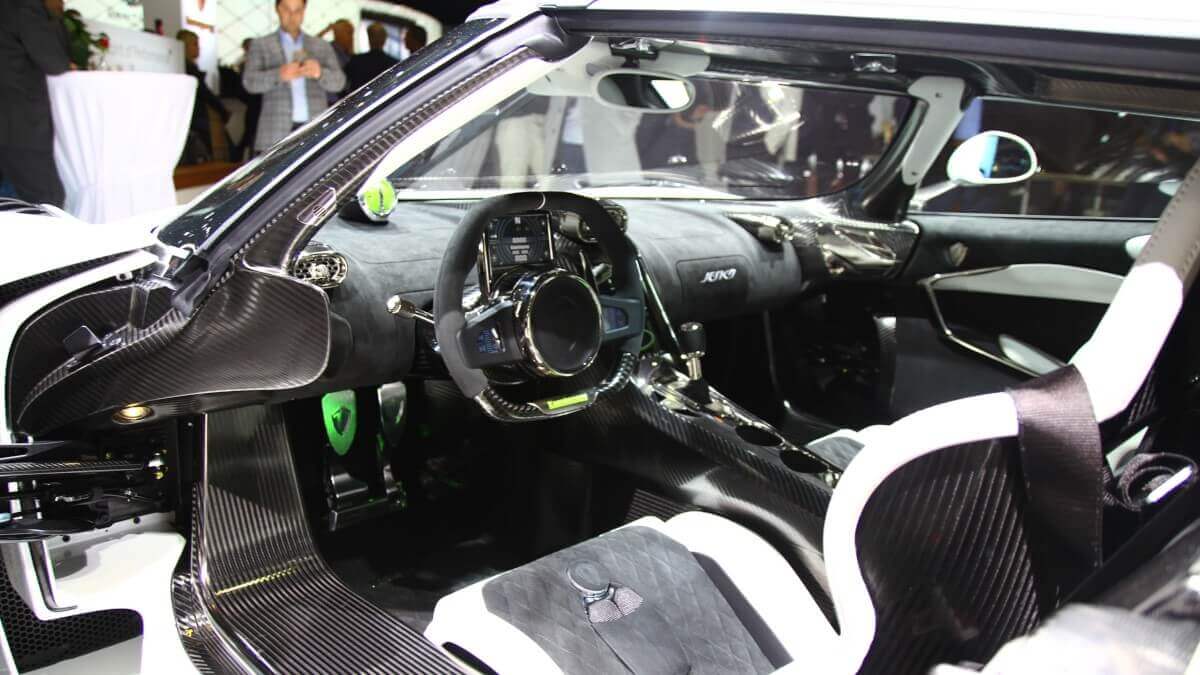

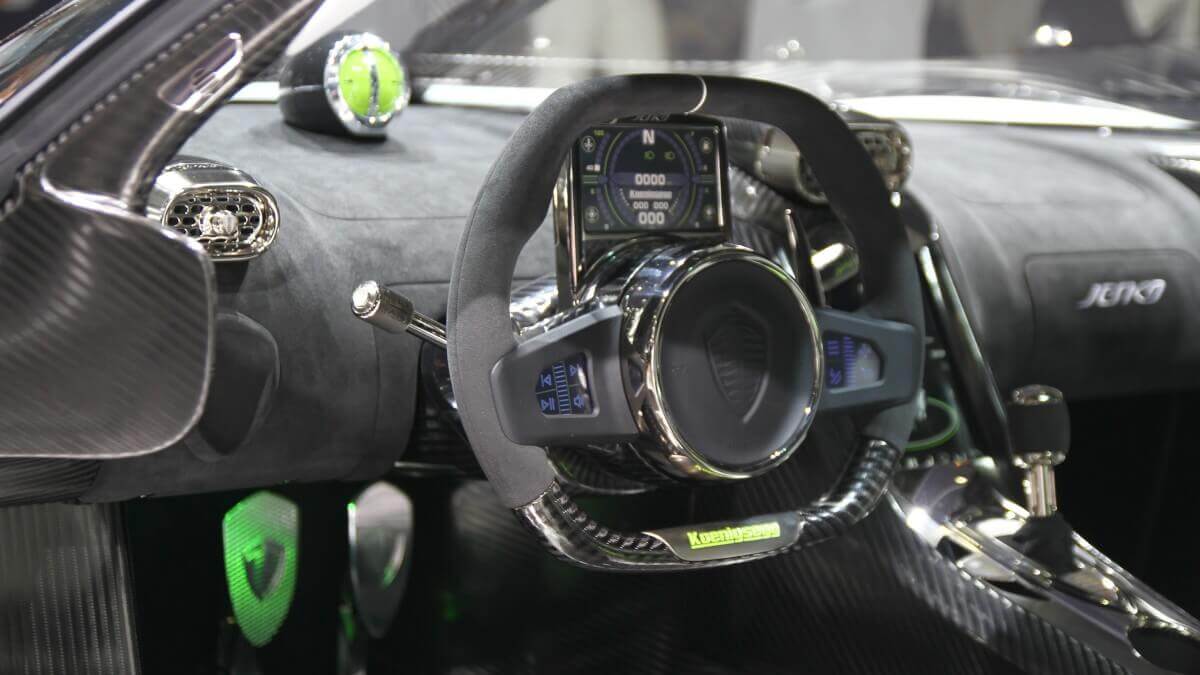

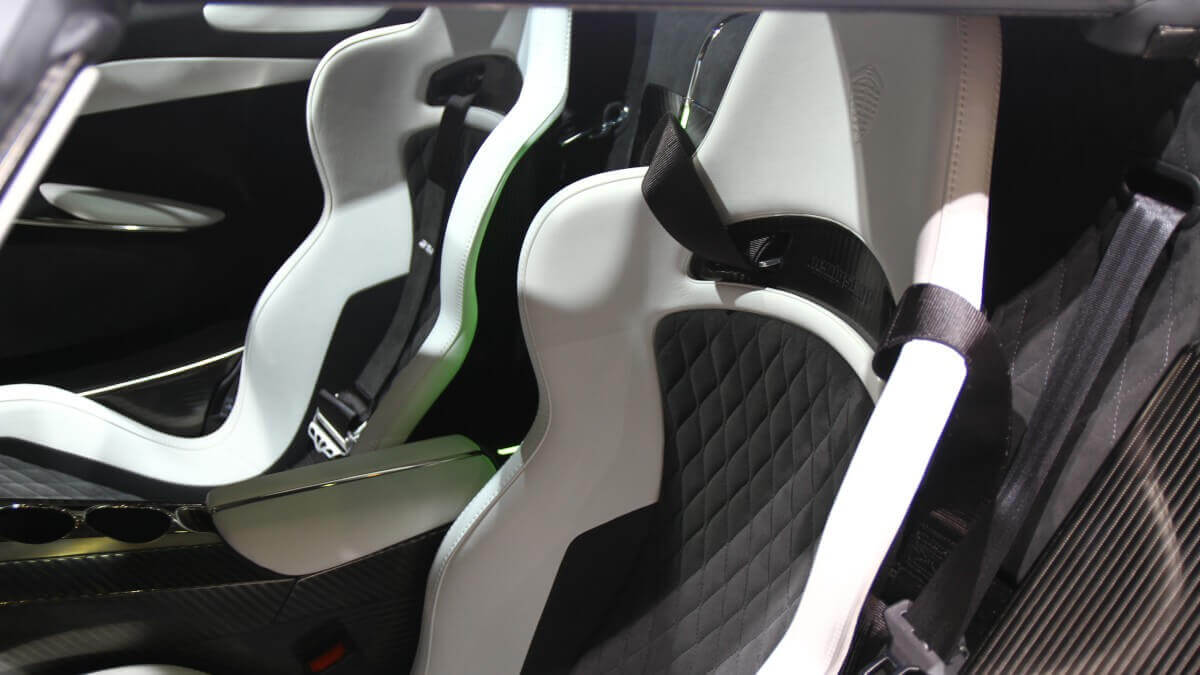

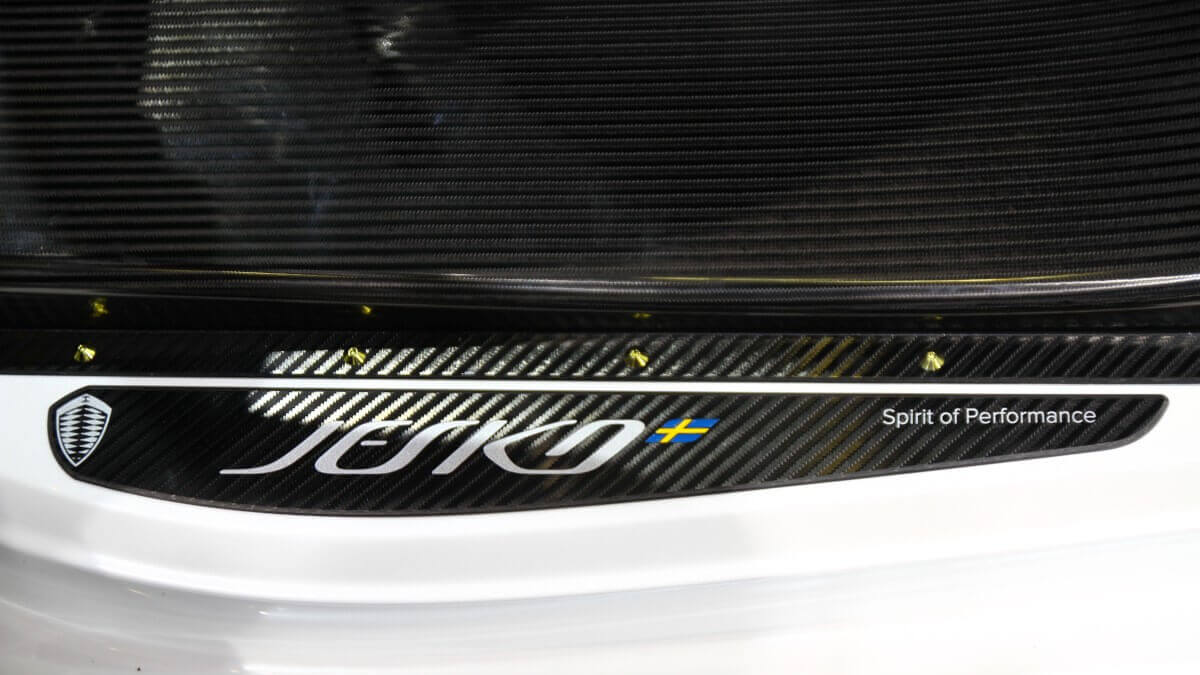

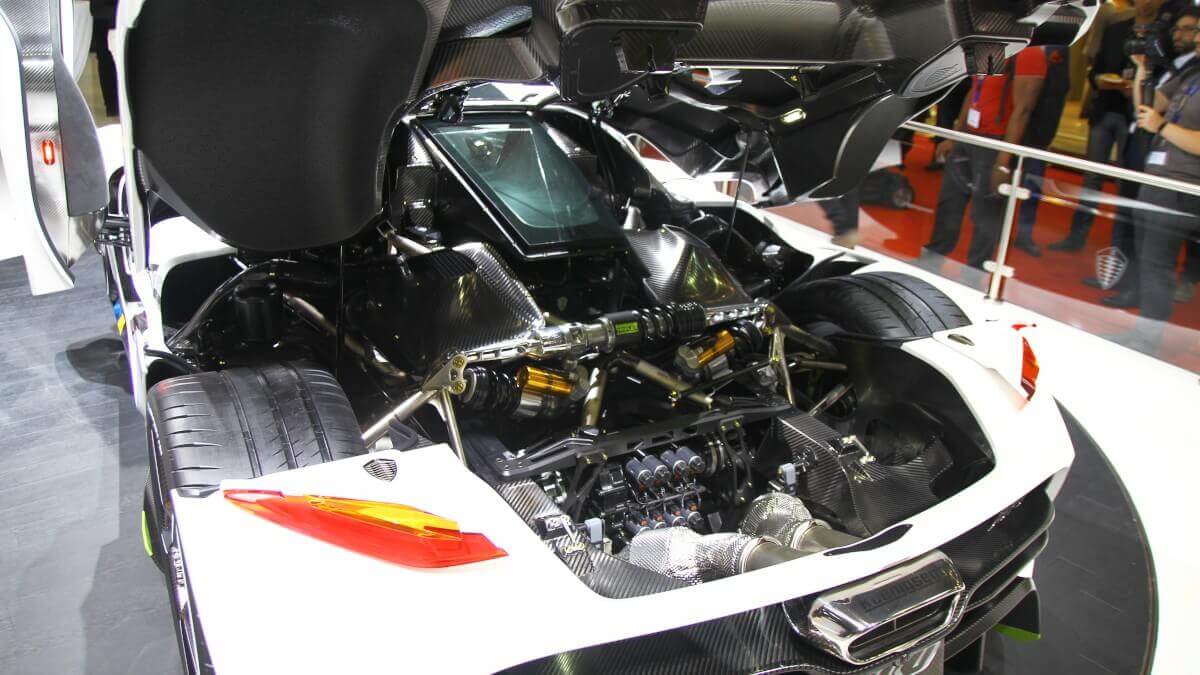

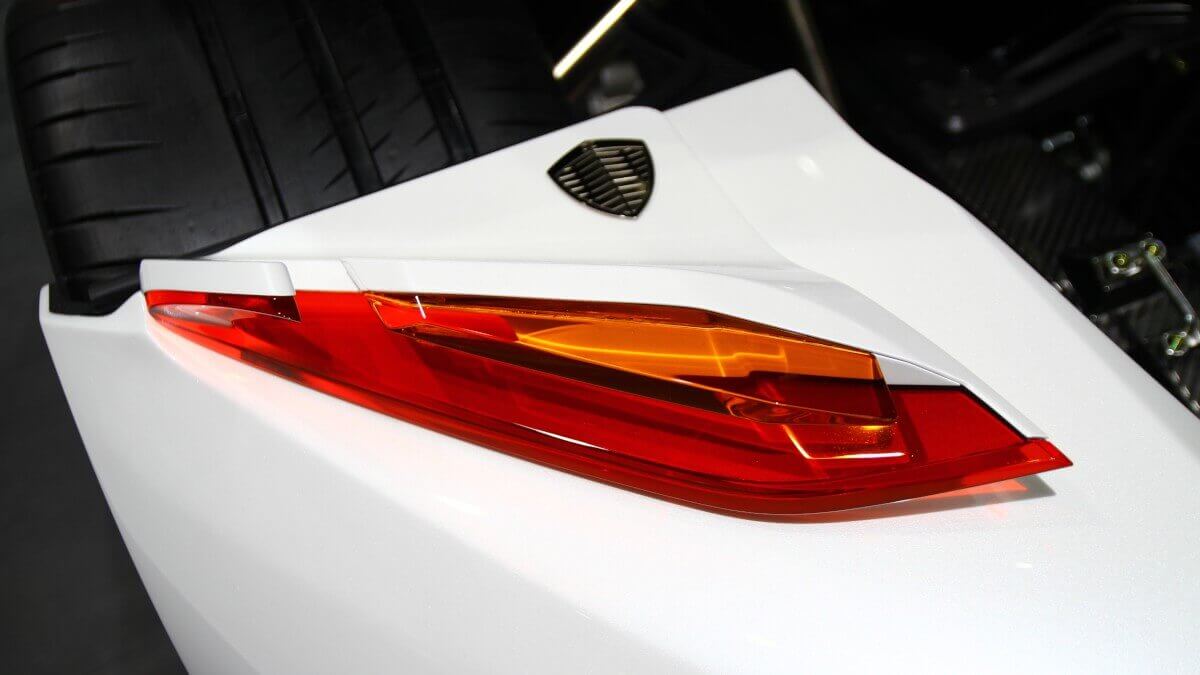

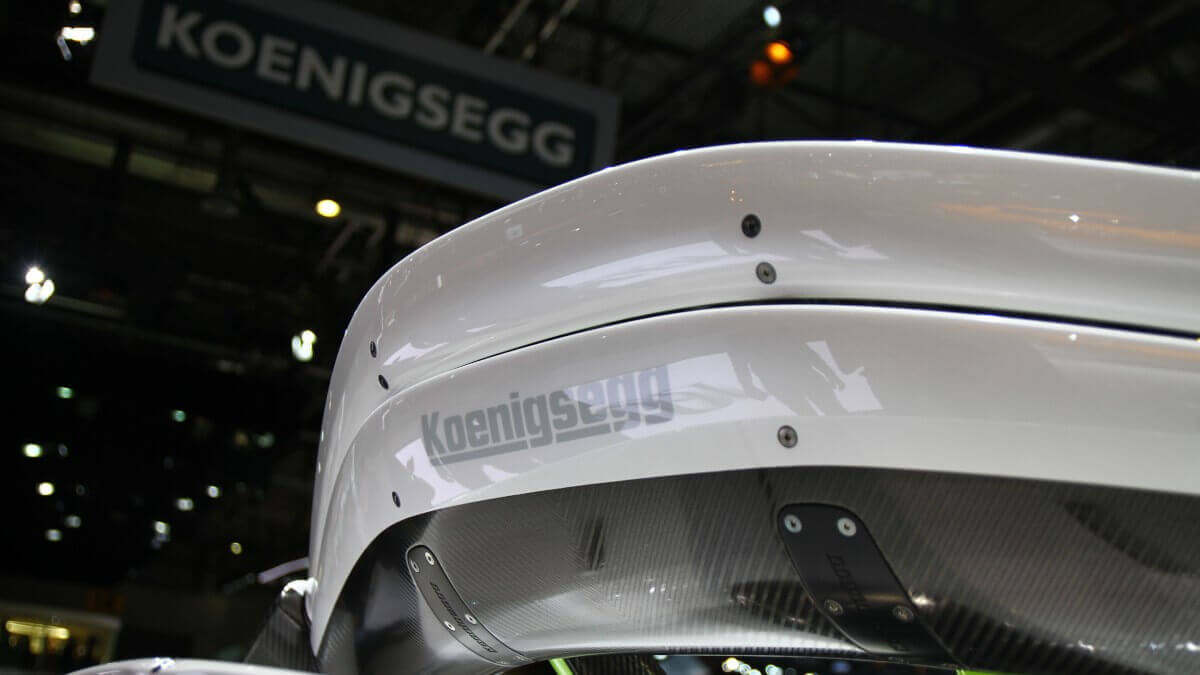

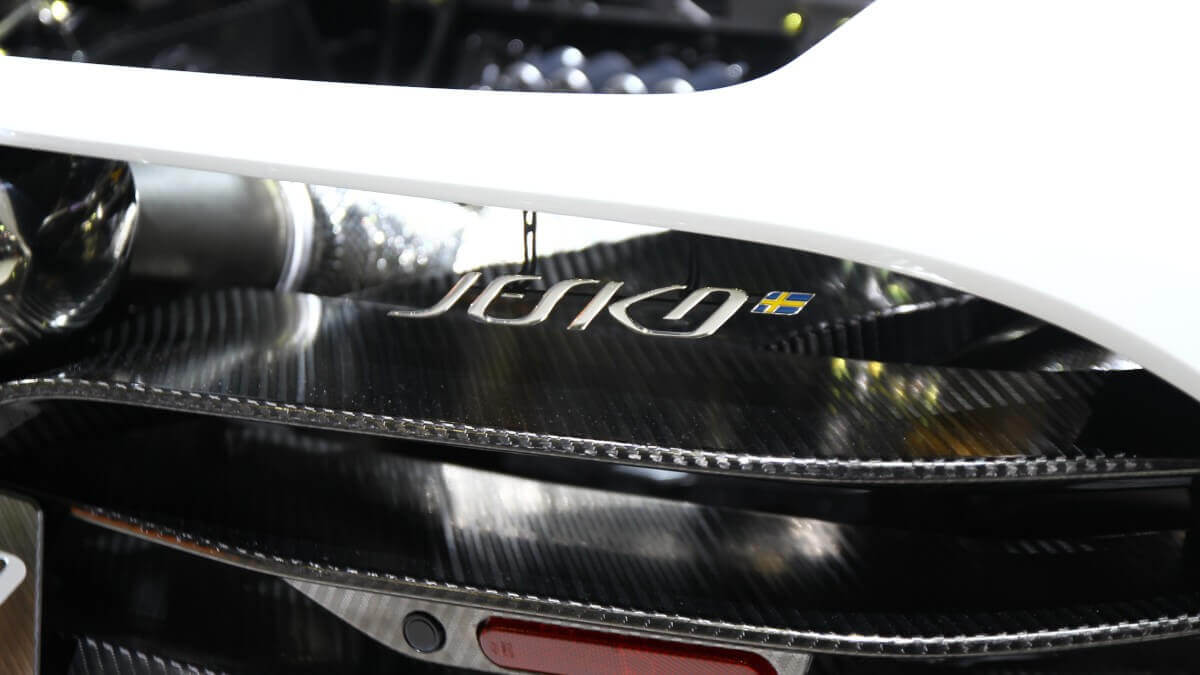

Compared to the Agera, the new Jesko receives a new carbon monocoque, which was extended by 40 millimeters and increased by 22 millimeters. This increases legroom and headroom inside and allows larger doors that continue to work on the patented ‘Dihedral Synchro-Helix Actuation’ hinges. However, these have been further developed and now lift the doors slightly when opening to avoid contact with the curb. Like at the parallely offered hyper-GT Regera, Jesko has fully robotized doors and hoods, that open and close electrically at the touch of a button. The extended wheelbase, in combination with the Triplex suspension system with additional third damper between the wheels, which is used for the first time also at the front axle, active dampers and a new rear wheel steering ensures better handling. Optionally, new carbon wheels are available in 20-inch at the front and 21-inch at the rear. With 5.9 (front) and 7.4 kilograms (rear) individual weight, they are among the lightest rims worldwide. They come ex works with Michelin Pilot Sport Cup 2 tires, but are also available with Michelin Pilot Sport Cup 2 R tires, which are only approved for use on dry roads.
Visually, the Jesko quotes previous Koenigsegg models through the wide windshield and the characteristic doors, but at the same time shows new elements. For example, very compact LED lights are used at the front and at the rear side. The entire body was designed in the wind tunnel and in CAD to the highest possible downforce and so it generates a ton of it at 275 kph (171 mph). This is not only ensured by the permanently installed front spoiler and the active rear wing mounted from the top, but also by other fine work on the body and the underbody. The Jesko 300 will use another spoiler and wing configuration with less downforce to allow higher topspeeds. As with all previous Koenigsegg models, the roof can be removed as a complete part. Due to the air ducts in the front area of the normal Jesko there is no room to store the roof in the car. With the Jesko 300 this should be possible.
Koenigsegg also installed innovations inside. For example, behind the speedometer unit in front of the windshield is a mechanical G-Force meter. In addition, there is a five-inch high-resolution SmartCluster display mounted directly on the steering wheel, whose display rotates according to the angle of the steering wheel and thus remains in the driver’s field of vision. Two small touchscreen areas on the steering wheel spokes allow quick acces to the nose lift, phone and audio functions. A further nine-inch touchscreen display in the center console provides access to the air conditioning, entertainment system and navigation datas.
From the Jesko Koenigsegg will build a total of 125 customer cars, beginning at the end of 2020. There were already 83 firm orders for the car ahead of the world premiere in Geneva. Shortly after the press days, we received the information that now all cars are pre-ordered.
Images: Koenigsegg, Martin Juul, Matthias Kierse


